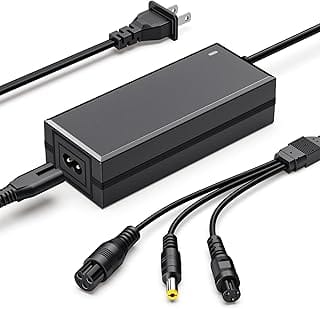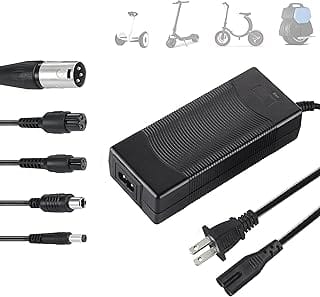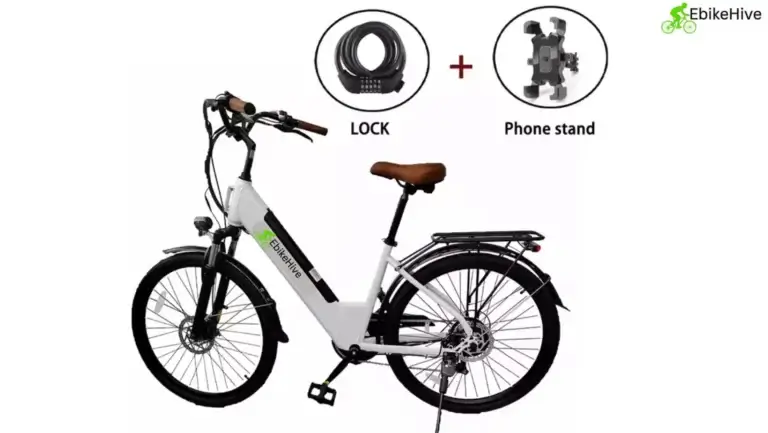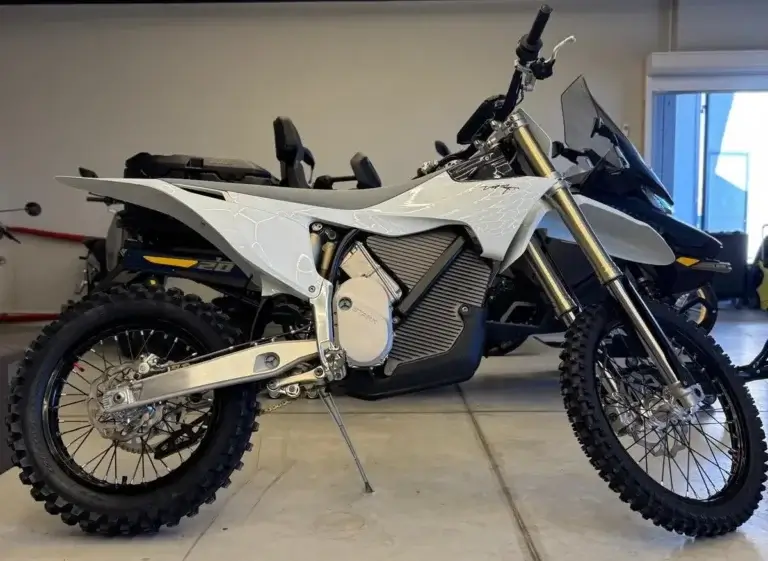Batteries for Electric Bikes: The Ultimate 2025 Buyer’s Guide
batteries for electric bikes are the lifeblood of e-bike performance, range, and reliability.
Lithium-ion (Li-ion) batteries dominate the market due to their lightweight, long lifespan (500–2,200+ charge cycles), and high energy output. Understanding the differences between battery types, capacities (in Ah and Wh), voltage options (36V, 48V, 52V), and care tips will help you choose the right one, whether you’re a commuter, mountain rider, or long-range explorer.
This guide compares the best batteries of 2025, explains key specs, and helps you extend battery life and performance without wasting money.

Table of Contents
What Is an Electric Bike Battery and Why Does It Matter?
An electric bike battery powers the motor that assists your pedaling, enabling you to travel longer distances with less effort. Battery capacity determines how far and how fast you can go. Choose the wrong battery, and you’ll face limited range, sluggish performance, or incompatible voltage issues. With battery costs ranging from $300 to over $1,000, it’s worth understanding exactly what you’re buying.
Types of Electric Bike Batteries
1. Lithium-Ion (Li-ion)
- Most common and efficient
- High energy density: 150–275 Wh/kg
- Lightweight, fast-charging (2–5 hours)
- Lifespan: 500–1,500 cycles
- Includes cell brands like Samsung, LG, and Panasonic
- Ideal for commuters, trail riders, and everyday use
2. Lithium Iron Phosphate (LiFePO₄)
- Known for thermal stability and longevity (up to 2,200 cycles)
- Heavier and bulkier than standard Li-ion
- Lower energy density (~80–150 Wh/kg)
- Great for high-load or cargo e-bikes
3. Lithium-Polymer (Li-Po)
- Slimmer, more flexible design
- Moderate cycle life (300–500 cycles)
- Sensitive to punctures and temperature
- Used in some design-focused urban bikes
4. Nickel-Metal Hydride (NiMH)
- Outdated technology
- Moderate performance, heavier and bulkier than lithium
- Faster self-discharge and memory effect
- Rarely used in current e-bikes
5. Lead-Acid
- Very low cost ($100–$300)
- Very heavy and short lifespan (<350 cycles)
- Found in some budget e-bikes or DIY builds
- Long charging time (6–8 hours)
Key Specifications That Matter
Voltage (V)
- Dictates power output and speed
- 36V: Common for standard riding
- 48V: More torque and acceleration
- 52V: High-performance setups
Tip: Always match voltage to your e-bike motor/controller.
Amp-Hours (Ah)
- Measures how much current a battery can supply
- Higher Ah = longer range
- Common range: 10Ah to 20Ah
Watt-Hours (Wh)
- Voltage × Amp-hours = energy storage
- Most accurate metric for range
- 500Wh = 20–40 miles depending on assist level, terrain, and rider weight
Battery Placement Types
- Downtube (frame): Best balance and weight distribution
- Rear rack-mounted: Easier access but can feel top-heavy
- Integrated: Sleek, hidden in the frame; often harder to remove
Best Batteries for Electric Bikes (2025 Picks)
| Battery Model | Voltage | Amp-Hours | Watt-Hours | Charge Time | Est. Range | Avg. Price |
|---|---|---|---|---|---|---|
| Bosch PowerPack 500 | 36V | 13.4 Ah | 500 Wh | ~4.5 hrs | 25–56 miles | $700–750 |
| Shimano STEPS BT-E8035 | 36V | 17.5 Ah | 630 Wh | ~5 hrs | 30–70 miles | ~$1,200 |
| Samsung Cell 52V 20Ah Kit | 52V | 20 Ah | 1,040 Wh | ~6 hrs | 60–100+ miles | $800–900 |
Why these batteries?
- Bosch PowerPack 500: Widely compatible, light weight (~2.7 kg), great balance of power and portability.
- Shimano STEPS BT-E8035: High capacity, seamless integration with Shimano mid-drives, very reliable.
- 52V 20Ah Kits: Ideal for touring and long-range commuters. Best for those seeking serious power and mileage.

Battery Charging, Maintenance & Longevity Tips
Battery Lifespan
- Lithium-ion: 500–1,000 full cycles = 2–5 years
- LiFePO₄: Up to 2,200+ cycles = 5–8 years
- Lead-acid: 300–500 cycles = 1–2 years
How to Extend Battery Life
- Keep battery between 20%–80% charge for daily use
- Avoid full discharges or leaving it at 100% for long periods
- Use only the charger provided by the manufacturer
- Store in a cool, dry location (15–25°C ideal)
- Don’t ride or charge in extreme heat or freezing temperatures
- Perform a full charge/discharge every 30–60 days if unused
Can You Upgrade Your E-Bike Battery?
Yes—if you match the voltage, mounting style, BMS communication, and connector type, upgrading to a higher Ah or Wh battery can dramatically increase your range. Always confirm compatibility with your motor and controller. For best results, consult your e-bike manufacturer or a certified technician.
Where to Buy Electric Bike Batteries
Online Retailers
- Widely available from global marketplaces
- Look for verified sellers and brand authenticity
- Beware of counterfeits or no-name batteries with poor warranties
EVAPLUS 54.6V Electric Bike Charger for 48V Lithium Battery Input Voltage AC120V(DC5.5-2.5/2.1MM Jack Connector)&(3-Prong Inline Connector)&(3pin XLR Plug)
Specialty E-Bike Shops
- Offer brand-matched batteries (Bosch, Shimano, etc.)
- Higher price but better support and warranty service
Fancy Buying Security Camera Power Adapter 12V 5A 100V-240V AC to DC 8-Way Power Splitter Cable FCC Certified LED Power
Local Bike Shops
- Personalized advice, testing, and installation
- Great option for beginners or those seeking a turn-key solution
Electric Bike Charger 48V, 54.6V 2A Charger (5 Plugs) Fast Universal for 48V Lithium Battery, Compatible with Ebike, One Wheel, Electric Bicycle, Scooter, Rad Power Bike
FFAQ: Batteries for Electric Bikes
How do I know what battery fits my e-bike?
Check your current battery label for voltage, capacity (Ah), and model. Match connector type, dimensions, and mounting style.
How far can I ride on one charge?
- 400 Wh: ~15–30 miles
- 500 Wh: ~20–40 miles
- 1,000 Wh: ~50–80+ miles
Range depends on rider weight, speed, terrain, and pedal assist level.
How much do electric bike batteries cost?
- Budget (lead-acid): $100–$300
- Mid-range (Li-ion 500Wh): $400–$800
- High-end (1,000+ Wh): $800–$1,500
Can I use a solar panel to charge my e-bike battery?
Yes, with an appropriate solar setup (150–300W panel + inverter + compatible charger), you can charge your e-bike off-grid. Charging time will vary depending on sunlight and panel size.
Are refurbished batteries safe?
Refurbished packs can be a cost-saving option, but only buy from reputable rebuilders that test cell balance and provide warranty coverage.

Final Thoughts
Your electric bike battery determines how far you go, how fast you get there, and how often you ride. Don’t settle for underpowered or poorly made options. Choose the right chemistry, capacity, and brand for your riding needs. Whether you prioritize long-distance commuting, mountain adventures, or reliable city transport, investing in a high-quality battery is a smart move for performance, safety, and longevity.



